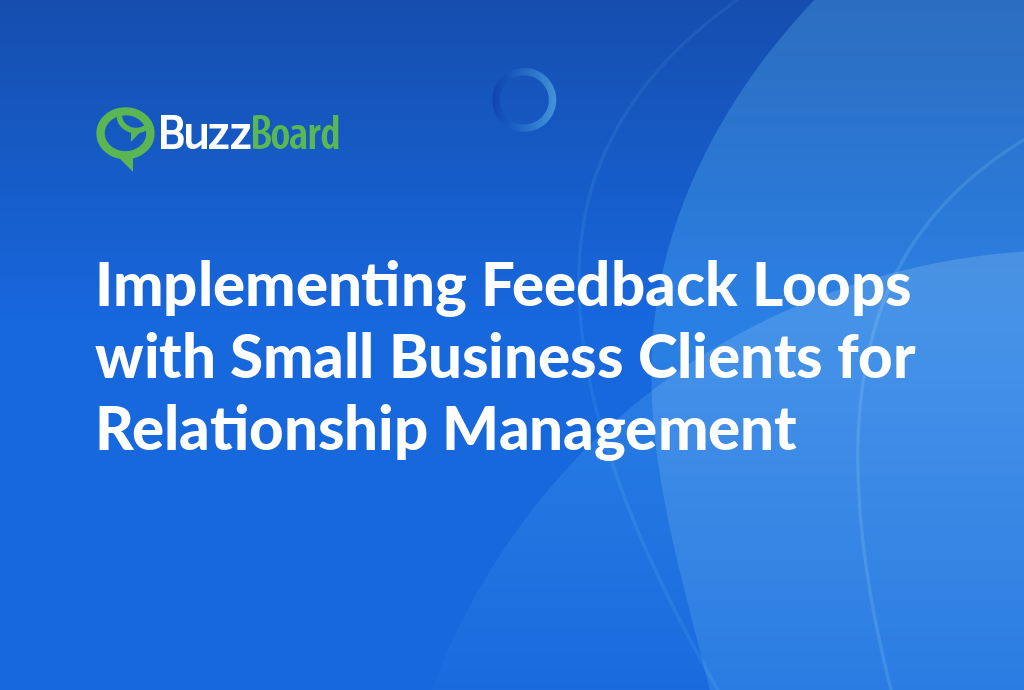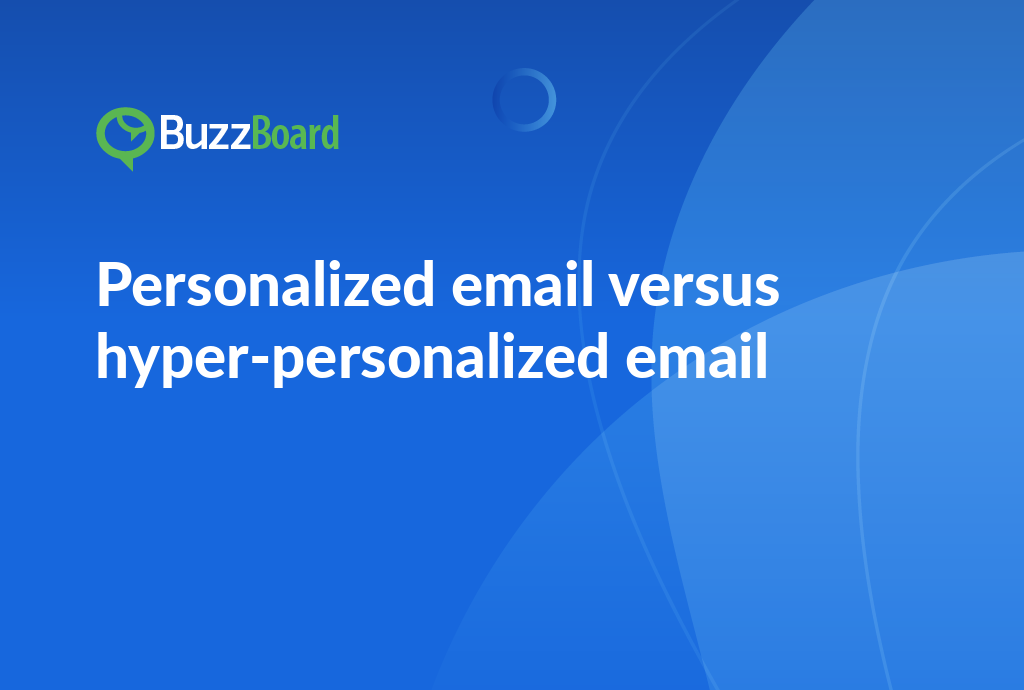Explaining the Significance and Need for Implementing Feedback Loops With Small Business Clients for Better Relationship Management
In the competitive world of the digital marketing industry, sustaining positive client relationships is vital. A particularly effective strategy is implementing feedback loops with small business clients for relationship management. They proved to be a reliable measure of success, as feedback loops allow digital marketing agencies to gauge client satisfaction, enhance service quality, and improve the overall client experience.
Feedback loops are a continuous process of obtaining and evaluating client feedback. This valuable insight is transformed into actionable steps, promoting constant enhancement in agency services and customer service. The bidirectional communication channel fostered by feedback loops increases transparency, trust, and collaboration between the agency and its clients.
Success in digital marketing hinges on adopting client-centric practices. Therefore, including the feedback loop in your agency’s operational framework is crucial. Regularly gathering, analyzing, and acting on client feedback can assist in improving services, aligning with the client’s business objectives, and addressing their specific pain points. This personalized approach often results in heightened client satisfaction.
The Harvard Business Review has conducted a study that reveals customer experience and satisfaction drives customer loyalty and business growth. But, how can you establish a valuable feedback loop? First, encourage your clients to share their experiences and suggestions. Apply various methods, such as online surveys, one-on-one interviews, or user testing feedback. Afterward, study this feedback, pinpoint areas for improvement, formulate a strategy, and implement changes. Finally, reconnect with clients to evaluate the effect of these changes.
In conclusion, deploying feedback loops with small business clients for relationship management is not solely about conducting a one-off client satisfaction survey. It involves a continuous evolution guided by client inputs. Dedication to this process of enhancing the client experience, driving satisfaction, and nurturing long-term client relationships is essential.
The Prominence of Feedback Loops in Enhancing Client Experience
Enhanced client experience is crucial to the success of any business, especially for digital marketing agencies that cater to the needs of small business clients. In today’s rapidly evolving business ecosystem, implementing feedback loops for relationship management is one of the most effective strategies.
Client feedback loops provide a wealth of information. Understanding and leveraging this feedback effectively can help agency professionals devise better strategies, make data-driven decisions, and forge robust partnerships with their small business clients. Furthermore, they aid in the continuous improvement of services, ensuring constant refinement of strategies and approaches, driving high client satisfaction.
Positive feedback reinforces the effectiveness of current strategies, while negative feedback uncovers areas requiring improvement. Therefore it’s vital for agencies to install a mechanism that ensures systematic feedback from clients, analyzing it effectively, and incorporating the changes into the marketing strategy. This proactivity can serve as a selling point to new customers, emphasizing the commitment to continuous improvement and client satisfaction.
The potency of feedback loops lies in their repetitive nature. Feedback collection should be consistent and ongoing. As the client’s business grows, the relationship between the agency and the client strengthens, morphing into a mutually beneficial partnership.
Incorporating feedback loops isn’t just about receiving comments. It’s about transforming received information into actionable steps to fulfill clients’ business objectives more effectively. For digital marketing agencies, this means refined strategies, improved services, and satisfied clients eager to expand their engagement.
Start implementing feedback loops with your small business clients today and witness the enhancement of client relationship experience. Remember, today’s information can aid in strategizing better for tomorrow!
A Comprehensive Guide on Establishing and Implementing Feedback Loops with Small Business Clients for Overall Satisfaction
As a digital marketing agency, you are well aware of the significance of client satisfaction. The growth and sustainability of your business rely significantly on your responsiveness and attentiveness to your clients’ desires and needs. This is where the introduction of feedback loops when dealing with small business clients for relationship management becomes crucial.
Feedback loops are an essential part of any client experience strategy. These mechanisms of feedback allow you to collect crucial information about your clients’ views and perceptions about your products or services. More importantly, they make room for constant improvement. By regularly evaluating and readjusting your service delivery based on frequent feedback, you create a cooperative evolution of your service, aligning it with your clients’ continually changing needs.
Numerous feedback tools are often used by digital marketing agencies to gather client opinions. These range from simple customer surveys to comprehensive online review platforms. While choosing an effective feedback method is important, the real value lies in how you utilize this data to satisfy your clients.
Focusing on the active responses to feedback shows your clients that their opinions matter and play a fundamental role in the development of your services. This does not only promote satisfaction but also fosters strong partnerships leading to better client retention and recommendations.
If your digital marketing agency hasn’t capitalized on feedback loops with small business clients yet, now is an excellent time to start. Remember, these loops are not simply about identifying faults but spotting opportunities for innovation. By incorporating continuous feedback into your strategy, you choose a route of resilience in an ever-evolving digital landscape.
Case Studies Showcasing the Impact of Regular Feedback Loops on Continuous Improvement in Business-Client Relationships
As a digital marketing agency, the prosperity of your relationships with small business clients hinges on the implementation of feedback loops. This strategy solidifies enduring relationships grounded on trust and transparent communication. Here’s how this straightforward tactic positively impacts your business-client rapport, fostering ongoing betterment.
The client experience leans heavily on feedback loops—a fundamental tool in preserving and enhancing client satisfaction. Essentially, feedback loops consist of a continuing process of sourcing, comprehending, and acting upon feedback from clients. By fostering an environment where consistent constructive criticism is encouraged, your agency can pinpoint avenues for ameliorating offerings, while guaranteeing the goals and objectives of your client align with what your agency provides.
The initiation of feedback loops with small business clients for relationship management commences with basic questions about their experience with your services, products, and the overall rapport. Instruments such as online surveys, regular meetings, and periodic progress report emails are vital in garnering candid feedback.
Feedback loops further bolster the understanding between both parties. By listening and comprehending the needs of small businesses, your agency can shift focus from solely offering a service to being perceived as a trusted ally aiding them in achieving their business goals.
Case studies ubiquitously underscore the positive consequences feedback loops have on business-client relationships. For instance, a global marketing firm witnessed an increase in client satisfaction and engagement rates post the application of regular feedback loops over six months. This success story exemplifies how feedback influences consistent improvement in your service, leading to flourishing client relationships.
As a result, feedback loops not only aid you in better servicing your clients but also pave the way for your agency to upsell or cross-sell relevant services, supplementing your business’s bottom line.
Ensure your agency acknowledges the profound impact feedback loops can have on your relationship with small business clients. Regard feedback as a regular part of your client interaction, not a one-off occurrence. The result will be fortified relationships, happier clients, and subsequently, enhanced agency growth.
Analysis of the Correlation Between Frequent Feedback Loops and Increased Client Satisfaction in Digital Marketing Agencies
Thanks to the ever-evolving digital landscape, marketing agencies today must continually adapt their strategies to meet the distinctive needs of small businesses effectively. A fruitful way to attain this goal is by implementing feedback loops with small business clients to help manage relationships. Feedback loops, a method of gauging client experience through ongoing interaction, have surfaced as a trustworthy avenue for optimizing client satisfaction in digital marketing agencies.
So, how do feedback loops function, and how are they enhancing the client experience? Let’s explore further.
Feedback loops can be defined as a repetitive process in which the outcome of an action modifies future actions. Put simply, it provides a platform where clients can express their satisfaction or dissatisfaction with various services. By actively inviting, analyzing, and implementing their feedback, digital marketing agencies can make necessary course corrections for continuous improvement.
The frequency of these feedback loops is crucial. Regular check-ins allow for consistent adjustments and modifications, ensuring that the strategies continually align with the client’s expectations. This constant dialogue creates a robust relationship between the agency and the client, showing commitment, deep involvement, and responsiveness to the client’s evolving needs.
When designing these feedback loops, there is no one-size-fits-all. The specific needs of the client and the nature of the agency-client relationship should be taken into account. However, factors such as the chosen communication channel, frequency of interaction, and methods of gathering and taking action on feedback should be thoroughly considered.
In closing, for digital marketing agencies aiming to consolidate their relationship with small businesses, implementing frequent feedback loops is a promising strategy. It enhances the client experience and increases client satisfaction. As a cycle of continual improvement, it enables agencies to fine-tune their services based on the feedback received, ensuring they hit the mark every time.









